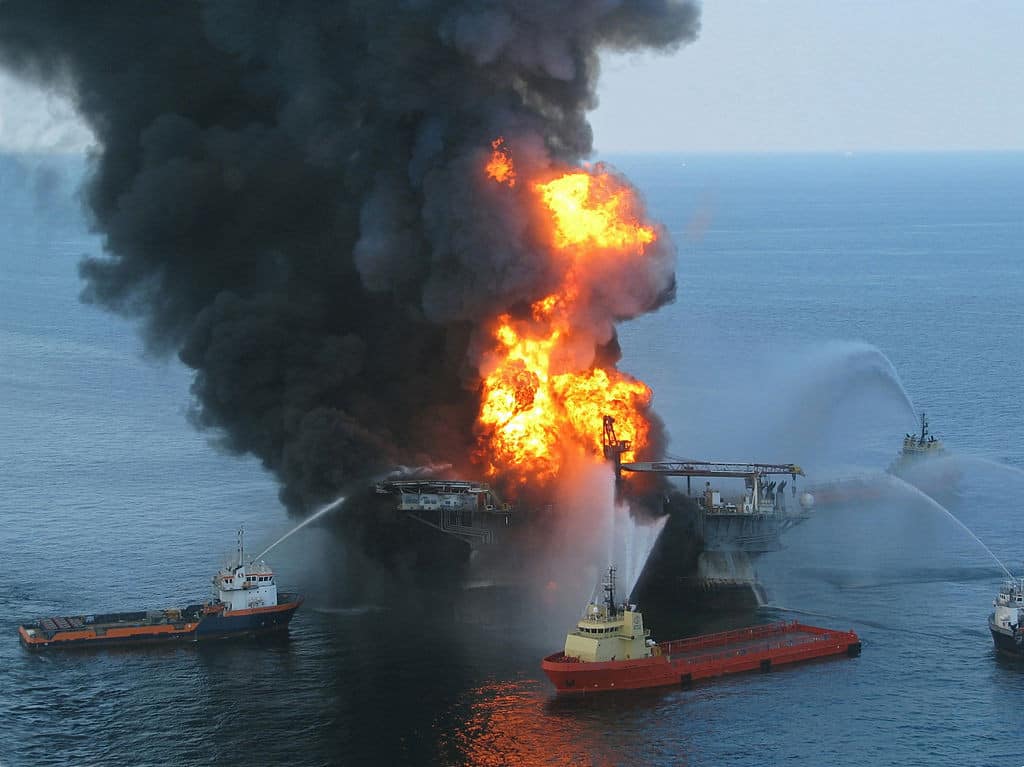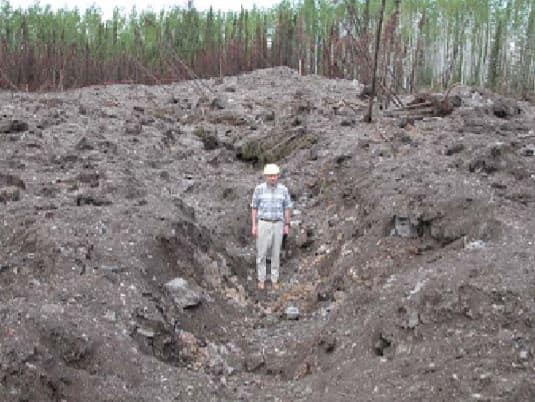Now that we have an understanding of the geologic and engineering considerations that go into both wellbore and subsurface integrity we will move on to how these considerations satisfy well containment. Classifying subsurface containment involves the integration of a number of components. We will focus on two basic components we have already seen in this course to gain a better understanding of how they ensure containment is met.
- Subsurface integrity: addressing geologic issues
- Wellbore integrity: addressing engineering issues
When analyzing cases where containment loss has occurred, the incident can be placed into one of these two basic components (wellbore integrity, subsurface integrity) and further classified by the location, metrics of the release, and type of well where the release occurred.
Here is an example of how containment loss is classified:
| Risk Factor | Type | Location | Description |
|---|---|---|---|
| ? | ? | ? | ? |
The successful outcome of future endeavors may depend upon learnings from study of how both minor incidents and major disasters occurred. We are going to examine a brief overview of the activities and decisions around two significant incidents of containment loss.
Macondo Well Blowout, Gulf of Mexico
The Macondo Well blowout (2010) occurred on an offshore semi-submersible rig, named the Deepwater Horizon, in the Gulf of Mexico as a result of failure to recognize hydrocarbons that were in the wellbore as a result of containment loss. This failure delayed use of blowout preventers that ultimately failed to cap the well and contain the loss of fluids. This incident was identified as a wellbore integrity event because of failure to adequately address engineering considerations of the wellbore.

Platform supply vessels battle the blazing remnants of the offshore oil rig Deepwater Horizon. A Coast Guard MH-65C dolphin rescue helicopter and crew document the fire aboard the mobile offshore drilling unit Deepwater Horizon, while searching for survivors. Multiple Coast Guard helicopters, planes and cutters responded to rescue the Deepwater Horizon’s 126 person crew.
Joslyn Creek, Alberta, Canada
Joslyn Steam Release Incident is another example of an incidence of containment loss. In this example, a subsurface integrity issue resulted in geologic failure of the caprock, which was supposed to be a barrier.1Energy Resources Conservation Board. (2010, February 11). Total E&P Canada Ltd. Surface Steam Release of May 18, 2006 Joslyn Creek SAGD Thermal Operation. https://static.aer.ca/prd/documents/reports/ERCB_StaffReport_JoslynSteamRelease_2010-02.pdf

The Joslyn Creek steam assisted gravity drainage project (SAGD) experienced a containment loss near Fort McMurray, Canada in 2006. Note the proximity of the project to the Athabasca River, which heads north from Fort McMurray toward its drainage into Lake Athabasca at the northern extension of the boundary between Alberta and Saskatchewan provinces.
On May 18, 2006, the Joslyn Creek steam assisted gravity drainage project experienced a containment loss as steam inside the bitumen reservoir breached and caused a 125 by 75 meter surface disturbance, hurling rocks and trees, and forming large craters. The project was operated by Deer Creek Energy Limited, a subsidiary wholly owned by Total E&P Canada Ltd.2Energy Resources Conservation Board. (2010, February 11). Total E&P Canada Ltd. Surface Steam Release of May 18, 2006 Joslyn Creek SAGD Thermal Operation. https://static.aer.ca/prd/documents/reports/ERCB_StaffReport_JoslynSteamRelease_2010-02.pdf


An explosion occurred in 2006 at Joslyn Creek, Alberta as a result of failure within the overlying caprock. The Joslyn Creek incident serves as an important example of subsurface failures that impact the integrity of oil and gas wells and threaten the health, safety and environment for workers and residents. Note the crater exposed within the forest, and the fissures, disturbed material, and man for scale.
The most likely steam release (containment loss) scenario, according to a report by the Energy Resources Conservation Board (now Alberta Energy Regulator)3Energy Resources Conservation Board. (2010, February 11). Total E&P Canada Ltd. Surface Steam Release of May 18, 2006 Joslyn Creek SAGD Thermal Operation. https://static.aer.ca/prd/documents/reports/ERCB_StaffReport_JoslynSteamRelease_2010-02.pdf, includes some of the following events. Notice that some of these events fall under well integrity and some under subsurface integrity. Good engineering and thorough understanding of the geology are always both important lines of defense to prevent containment loss.
- The underlying cause of the steam release was the injection of steam at excessively high pressures (well integrity / design and operational failure, human error).
- Changes in the steam recovery program forced high pressure steam into the reservoir. Eighteen days later, on April 12, 2006, a vertical fracture was initiated near the injector. This fracture and other events allowed unanticipated communication of fluids between rock zones outside of the well (subsurface integrity / geomechanics failure).
- Between April 21 and May 18, 2006, high-pressure steam and water pooled under the Clearwater caprock causing it to fail under shear (subsurface integrity / geomechanics failure).
- Once the caprock was breached, a rapid drop in pressure occurred. This pressure drop caused hot water that had accumulated in the sandy units below the caprock to flash to vapour. In other words, the energy made available when the pressure was reduced, evaporated some of the hot water, producing flash steam. This flash vaporization provided the energy for a catastrophic explosion that disturbed a large surface area and subsurface volume and threw rocks several hundred meters into the air4Enthalpy of vaporization. (2021, May 21). In Wikipedia. https://en.wikipedia.org/wiki/Enthalpy_of_vaporization (subsurface integrity / geomechanics failure).
As a general conclusion, scientists and engineers believe that natural fractures and the presence of weak intervals in the caprock could have contributed to the steam release. However, in the absence of operation at excessively high pressures, they conclude that it is unlikely that these weaknesses would have resulted in a steam release. Thus, it appears that human error and poor design around well integrity both were the major contributors to this incident.5Energy Resources Conservation Board. (2010, February 11). Total E&P Canada Ltd. Surface Steam Release of May 18, 2006 Joslyn Creek SAGD Thermal Operation. https://static.aer.ca/prd/documents/reports/ERCB_StaffReport_JoslynSteamRelease_2010-02.pdf
Integrative Approach to Containment
It is vital to ensure that both wellbore and subsurface integrity are met, given failure of a single component can lead to disastrous consequences. Engineers and geologists must work together to ensure the integrative approach to containment is met (pictured below). On the next page we will take a deep dive into two “defense-in-depth” methods, taking into account both wellbore and subsurface integrity, that are frequently used to mitigate risks of containment loss.

Image Credits
- Joslyn-creek-crater: Alberta Energy Regulator
- Joslyn-creek-man-in-fracture: Alberta Energy Regulator